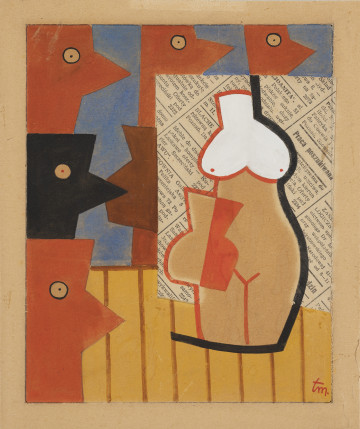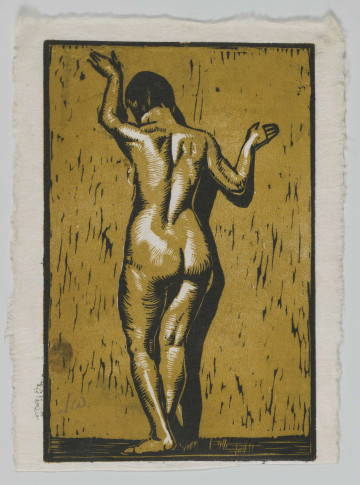
Zuzanna and the Old Men
1949
National Museum in Szczecin
Part of the collection: European classics of modernity
Wacław Palessa began his studies at the Municipal School of Decorative Arts and Painting in Warsaw, but from 1925 he transferred to Tadeusz Pruszkowski's class at the local State School of Fine Arts. This influential painter, one of the most important pedagogues of the time, shaped the young artist's artistic interests. Palessa's student works testified to his total acceptance of the programme of the Warsaw School group, founded in 1929 by his master: The idea was to create within the association an atmosphere of mutual cooperation, controlled by a strong, absolute collegial opinion, which would, on the model of the old guilds, stimulate the members of the association to work more and more intensively on themselves, and at the same time guarantee externally the reliability of workmanship and artistic level. This manifesto accompanied the group's first exhibition, opened a year later at the National Gallery Zachęta, in which Palessa took part. Unlike Pruszkowski's earlier St. Luke's Brotherhood, which focused on issues of drawing and clear, haptic form, the youngest generation of Warsaw artists combined antiquarian inspirations with colour explorations and humorous motifs in their canvases. A saturated, pure colour palette characterised especially the paintings of Palessa, who often used quotations from modern, though already classic, art masterpieces. The frequent depictions of young, naked women were accompanied by playful accessories. In the pastel Saksofonistka [The Saxophonist] (c. 1930), Palessa incorporated the model's traditionally modelled complexion into a quasi-Cubist background, evoking associations with the early works of Pablo Picasso. A similar contrast between two modes of painting characterises Akt z gramofonem [The Nude with A gramophone] from the Szczecin collection, whose heroine, modelled on Manet's Olympia, is surrounded by sketchily rendered Rococo boudoir furnishings and textured ornaments.
Szymon Piotr Kubiak
Author / creator
Dimensions
cały obiekt: height: 113 cm, width: 113 cm
Object type
painting
Creation time / dating
Creation / finding place
Identification number
Location / status

1949
National Museum in Szczecin

National Museum in Lublin

1913
National Museum in Lublin
DISCOVER this TOPIC
National Museum in Lublin
DISCOVER this PATH
Educational path